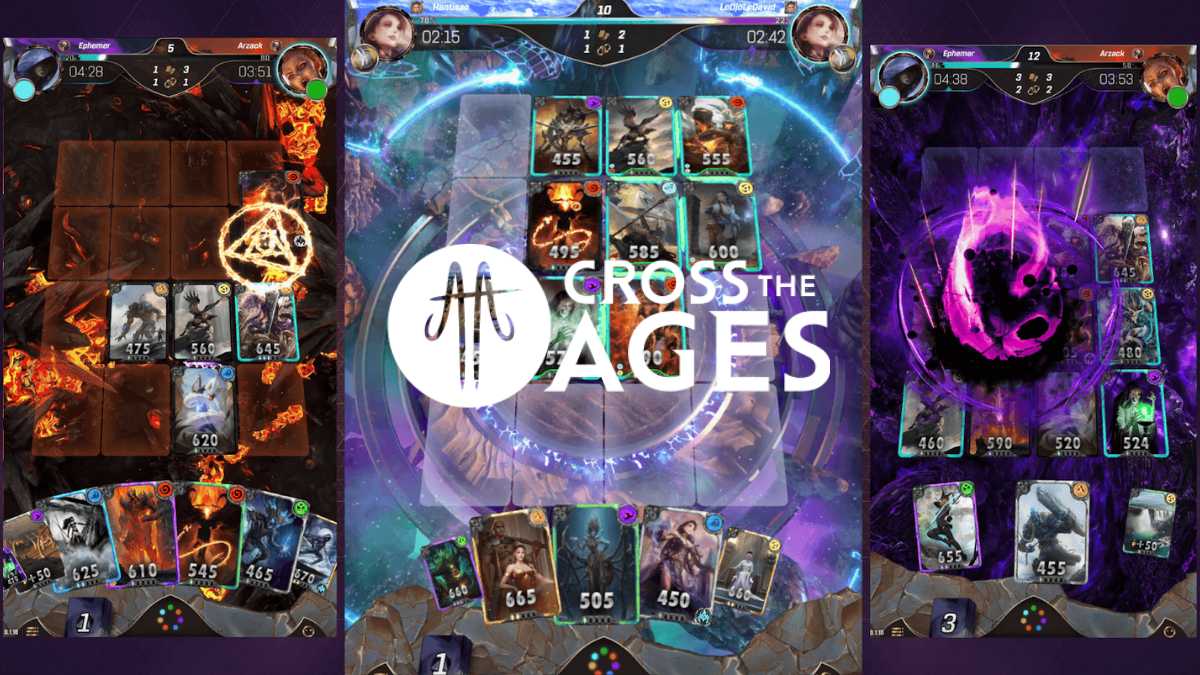The Cross the Ages ecosystem is growing. Known originally for its digital trading card game built on blockchain ownership, the franchise is now branching out. A new title called Arise is entering closed alpha, signaling the start of what could be a more expansive gameplay vision.
Alpha phase one kicks off May 28, limited to a smaller test group. It’s the first playable version of a game that aims to do more than replicate the card game experience, leaning into strategy, worldbuilding, and a different type of competitive interaction.
What Arise Brings to the Table
Unlike its predecessor, which focused on PvP card duels, Arise shifts into tactical gameplay. Players control teams of characters in turn-based skirmishes, with each unit having its own stats, abilities, and battlefield roles. The core mechanics feel closer to tactical RPGs or strategy board games than digital card decks.
The art direction sticks with the established aesthetic: sci-fi meets fantasy in a lore-rich setting. Character designs, environments, and effects remain sharp and stylized, but the perspective has zoomed out. Now, instead of isolated duels, players are managing movement, positioning, and synergy across an arena-like map.
Closed Alpha Structure and Goals
The alpha rollout will happen in phases. Phase one, starting in late May, is designed to gather early feedback and stress test the game’s core systems. It will likely focus on basic features: matchmaking, turn-based flow, and ability interactions. The full content scope remains under wraps, but expect stripped-down access focused on technical polish rather than full gameplay depth.
This is also a foundational test for multiplayer stability. Early access participants will help the team evaluate how well the game runs in live environments, especially with blockchain integration layered on top.
Blockchain Integration and Game Economy
As with other Cross the Ages titles, Arise features blockchain-based asset ownership. Characters, cosmetics, and progression elements are likely to be tokenized, although specific tokenomics are being kept vague for now. What’s clear is that the developers are sticking to their Web3 approach, with player-owned assets forming the backbone of in-game economies.
Whether this will affect gameplay or remain cosmetic depends on how the final balance shakes out. Early builds will likely avoid deep integration until later phases, focusing more on mechanics than monetization.
Context Within Web3 Strategy Games
The pivot toward strategy in Arise reflects a broader shift in Web3 games trying to move beyond play-to-earn models. Rather than relying solely on asset value, projects like this are experimenting with game-first approaches that add blockchain layers after solid mechanics are in place.
If successful, Arise could help reshape how Web3 games are perceived — less as marketplaces with game elements and more as actual games with layered ownership. It’s an approach similar to what Parallel and Shrapnel are attempting, though each with different genres and mechanics.
Looking Ahead
It’s early days for Arise, and alpha testing rarely paints a full picture. But the fact that Cross the Ages is expanding its universe and shifting genres suggests it’s aiming for long-term relevance, not just short-term traction.
Whether this strategy pays off will depend on more than just blockchain. It will hinge on whether the game can carve out its own tactical identity while still delivering on the lore and aesthetics that brought its card game community in to begin with.
Web3 Analyst & Play Blockchain Games Guide
CryptoKit breaks down Web3 gaming like it’s second nature. From tokenomics to airdrop strategies, she turns blockchain chaos into clear, actionable advice for players who want to win more than XP.




